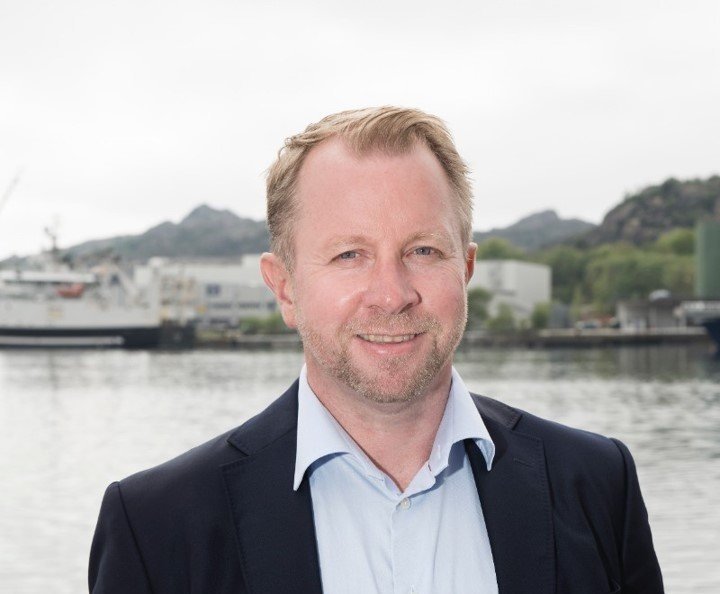Cluster Catch-Up: SINTEF Ocean
“The Norwegian Ocean Technology Centre represents our biggest opportunity going forward.” - Anders Valland.
In the last Cluster Catch-up, TechnipFMC told us about the great progress on the Deep Purple™ project. SINTEF Ocean is the following company in our column!
The research organization SINTEF Ocean is involved in many large projects in Norway where hydrogen plays a key role. We reached out to Anders Valland for a chat about their plans for the future.
What is SINTEF Ocean’s primary focus right now?
Anders Valland is Research Manager for Maritime Energy Systems at SINTEF Ocean.
The backbone of SINTEF Ocean maritime research, development and innovation is the need to reduce harmful emissions and improve energy efficiency, thereby creating a more environmentally friendly shipping industry for the future. We work within a broad range of emission solutions. Vessel optimisation and capacity utilisation combined with energy efficiency and use of alternative fuels are our main focus areas when creating innovations securing sustainability and competitiveness of the maritime transport sector, says Anders Valland.
What are the biggest opportunities and challenges for SINTEF Ocean in the future?
The Norwegian Ocean Technology Centre represents our biggest opportunity going forward. The centre will develop new knowledge and technology with the ocean being the common denominator. The new centre will increase our capacity, as well as allow us to solve future challenges. Research policy and financing will be a hot topic for us in the coming years. We depend on long term commitments to be able to solve future challenges.
The article continues below the illustration.
The Norwegian Ocean Technology Centre will consist of new laboratories at Tyholt in Trondheim, Norway. The centre will also have installations in the Trondheimsfjord, and in the sea off the coast of Hitra, Frøya and Ålesund. Illustration by Link arkitektur/Statsbygg
How can hydrogen be a part of the solution for the future?
Maritime transportation requires systems that can produce high power over long periods of time. Pure hydrogen has very low energy density and is thus applicable for special purposes only (e.g. short distances, fixed routes). By combining hydrogen with other elements it can be used to create fuels with higher energy densities, and we see this as the primary role for hydrogen in the maritime industry. Hydrogen gives zero local emissions, the primary focus is on the source of hydrogen to ensure it has low or zero emissions over its life cycle.
Valland continues:
In SINTEF Ocean we are involved in many projects where hydrogen is considered part of the solution. The FreeCO2ast project focused on hydrogen and fuel cells for part time operation by a Coastal Express vessel. The CruiZero and ZeroCoaster projects have looked at solutions for exploration cruise and coastal transport vessels, respectively. The ZeroKyst project is looking at hydrogen as a solution for coastal fishing vessels. We are just now embarking on the FME Hydrogeni project that takes a holistic approach to production, distribution, storage and use of hydrogen across a range of industries, including the maritime.
What is your primary focus when it comes to sustainability?
Sustainability is the foundation in everything within science, and is at the core of our vision "Technology for a better society". We use the UN's Sustainability Development Goals to guide us in our daily work. SINTEF Ocean works within the whole maritime value chain, from food production to the search for new resources. The climate challenges we are facing require low and zero emission solutions and a comprehensive conversion to renewable energy production. Maritime transport is facing extensive changes that will require innovative, sustainable, reliable, and cost-effective solutions.
Why did you decide on becoming a member of Ocean Hyway Cluster?
It is part of SINTEF Oceans' strategy to be close to the maritime industry and understand the needs and challenges facing this industry. Being part of clusters provides us with the opportunity to listen and learn. We also have a role in bringing knowledge to the industry, and clusters provide us with a platform for this. Finally, a cluster provides a perfect arena for building strong consortiums to address the needs of the industry.
SINTEF Ocean sees Ocean Hyway Cluster as a very strong partner within the specific area of hydrogen for maritime applications. The cluster has a very strong membership of industry that are central to the development of solutions. The cluster is a strong platform for credible, effective consortiums to address challenges specifically targeting the use of hydrogen for maritime applications, Valland ends.
Curious about a membership in Ocean Hyway Cluster? Have a look here.
Hi!
Do you have comments on this article? Feel free to get in touch.
Siri Odijk Solbakken
Communications Advisor
+47 977 53 065
siri@hubforocean.no













